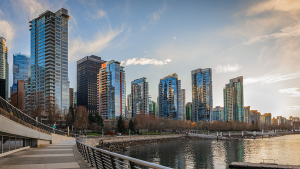OTTAWA — Capital expenditures on non-residential construction and machinery and equipment are expected to increase 7.0 per cent to $266.2 billion in 2021, reports Statistics Canada in its Capital and Repair Expenditures Survey, released Feb. 26.
The increase would follow a 9.2 per cent decline in 2020 largely attributable to the economic shock from the COVID-19 pandemic, stated a release.
While capital spending on non-residential structures is expected to reach $175.2 billion, up 7.5 per cent from 2020 and surpassing the level achieved in 2019, the $91 billion anticipated for machinery and equipment (up 6.2 per cent) falls short of fully offsetting the 13.4 per cent decline reported in 2020.
The survey is based on a sample survey of 25,000 private and public organizations. The survey on intentions for 2021 was conducted from September 2020 to January 2021.
The report indicated capital spending by public sector organizations is anticipated to increase by 9.3 per cent, surpassing the 5.7 per cent growth in 2020. Investments in privately held non-residential tangible assets are expected to increase by 5.6 per cent in 2021, well short of compensating for the 16.7 per cent decline in 2020.
Of the 20 industrial sectors, 14 have indicated plans to increase their capital expenditures in 2021, compared with five in 2020 and 15 in 2019.
The transportation and warehousing sector is expected to lead the way for investment in Canada in 2020 and 2021. Its capital spending is set to reach a record of $47.9 billion in 2021 (up 7.2 per cent), following a similar gain in 2020 (up 4.9 per cent) and a significant increase in 2019 (up 19.5 per cent).
The transit and ground passenger transportation subsector should see its total investment in 2021 increase by 10.4 per cent (up $1.2 billion to $12.3 billion) because of several large-scale public transit projects taking place in Quebec and Ontario. The governments of Canada and Quebec announced they would each invest $1.28 billion in the projected $6.3 billion cost to complete the Reseau express metropolitain in Montreal. Large investments are also expected to take place in Ontario, with the City of Ottawa having held its groundbreaking ceremony for the $4.7 billion Stage 2 of its light rail transit project in September 2020. Similar public transit projects are also continuing in Toronto, with on the construction of the Metrolinx Eglinton Crosstown light rail transit project.
Capital spending in the mining, quarrying and oil and gas extraction sector is set to increase to $32.9 billion (5.2 per cent) in 2021, following a substantial decrease of $14.7 billion (31.9 per cent) in 2020.
Significant reductions in capital spending occurred) in the accommodation and food services sector in 2020 (down 29.9 per cent) and are expected to continue in 2021 (minus 26.6 per cent).
All but three provinces and territories should see their spending intentions increase in 2021, with the largest gains taking place in Ontario, up $7.0 billion, and Quebec, up $4.7 billion.
Increases are also anticipated in the pipeline transportation subsector (up $552 million to $13.0 billion) and in support activities for transportation (up $693 million to $10.7 billion). The majority of the investments for these subsectors would take place in British Columbia and Alberta.











Recent Comments
comments for this post are closed